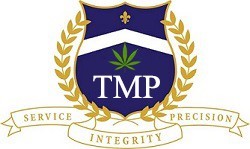Our team offers the most comprehensive, engineering-based Cost Segregation Study in the market. Don't leave money on the table. Take advantage of our premium quality product today!
- 800-474-0591
- bob@tmpgreen.com
- Miami, Florida
Supper User
Congress approved major tax reform in the Tax Cuts and Jobs Act, signed into law on December 22, 2017. This legislation, which affects both individuals and businesses, is commonly referred to as TCJA or the 2017 tax reform legislation.
A taxpayer may elect to expense the cost of any section 179 property and deduct it in the year the property is placed in service. The new law increased the maximum deduction from $500,000 to $1 million. It also increased the phase-out threshold from $2 million to $2.5 million. For taxable years beginning after 2018, these amounts of $1 million and $2.5 million will be adjusted for inflation.
The Tax Cuts and Jobs Act (P.L. 115-97) as signed by President Trump on December 22, 2017. Numerous provisions discussed below affect depreciation.
Code Sec. 179
Effective for tax years beginning after December 31, 2017, the 2017 Tax Cuts Act:
- Increases dollar limit to $1 million and investment limit to $2.5 million
Allows expensing of “qualified improvement property” (i.e. internal improvements to nonresidential real property) and, also, roofs, HVACs, fire protection and alarms, and security systems for nonresidential real property
- Allows expensing for property used in connection with lodging (e.g., in connection with residential rental property)
Adjusts $25,000 expensing limit on certain heavy vehicles for inflation
Bonus Depreciation
Effective for property acquired after September 27, 2017 and placed in service after that date:
- The bonus depreciation rate is increased to 100 percent but phases down 20 percent each year beginning in 2023
A taxpayer may elect to apply the 50 percent rate for property placed in service during the taxpayer’s first tax year ending after September 27, 2017.
- Used property qualifies for bonus depreciation
Films, television shows, and theatrical productions are eligible for bonus depreciation
- Property used by rate-regulated utilities and property is excluded from bonus depreciation
Property of certain motor vehicle, boat, and farm machinery retail and lease businesses that use floor financing indebtedness is excluded from bonus depreciation
- Corporate election to claim AMT credits in lieu of bonus depreciation is repealed
Long-term accounting method relief from impact of bonus depreciation extended
Interplay of Bonus Depreciation and Code Sec. 179 Expensing
Code Sec. 179 allows businesses to deduct the purchase of qualified equipment and software.
Qualified property for the Section 179 deduction is tangible section 1245 property (new or used) depreciable under MACRS acquired by the purchaser for use in an active trade or business. The deduction limit is $1 million, and there’s a capital investment limitation of $2.5 million and then a dollar-for-dollar reduction after that. In 2018, Code Sec. 179 was expanded to include a new category of assets called “qualified real property" which includes additional items such as a roof; heating, ventilation, and air conditioning (HVAC); as well as improvements to the interiors; fire protection; alarm systems; and security systems of nonresidential properties.
Code Sec. 179 expensing now includes personal property used for furnishing lodgings, such as furniture and appliances, hotel rooms and student housing, and apartment buildings. There’s no benefit in taking Code Sec. 179 expensing on tangible personal property when clients have 100 percent bonus depreciation applied. Clients are
trying to avoid the $2.5 million cap with this play. If clients acquired more than the $2.5 million of capital expenditures, then Section 179 deductions start being reduced. Planners tell clients they are going to get to the same answer: expense the cost or depreciate it and apply the 100 percent bonus depreciation. Clients are going to take all
of it in the current year, so there’s no difference at the end of the day.
NOTE: There’s no benefit in taking a Code Sec. 179 expense on tangible personal property when bonus depreciation is 100 percent. Bonus depreciation is preferable to use by very large businesses that spend more than the $2.5 million spending cap for the year.
¶607 LIKE-KIND EXCHANGES
Proposed regulations published August 8, 2018 provide that replacement property acquired in a Code Sec. 1031 exchange can qualify for bonus depreciation. The amount of bonus depreciation depends upon whether the replacement property is new property or used property. Property acquired in a like-kind exchange comes in two varieties: “exchanged basis property" (this is the carryover basis from the relinquished property), and “excess basis property" (this is the increase in basis which typically results from acquiring a more valuable piece of property).
In the case of new replacement property, both the exchanged basis and the excess basis property qualify for bonus depreciation.
In the case of used replacement property, only the “excess basis" property qualifies for bonus depreciation.
¶608 NET OPERATING LOSSES UNDER THE NEW TAX LAW
The landscape for net operating losses (NOLs) has changed since the enactment of the Tax Cuts and Jobs Act in 2017. This is important because of the deductions that 100percent bonus depreciation is going to create.
PLANNING POINTER: NOLs can no longer be carried back to a previous tax year. A little planning opportunity exists for fiscal year taxpayers for whom the 2017 tax year is still open. For NOLs created in 2017 the carryforward can offset 100 percent of taxable income into the future. Planners now need to track pre-and
post-2018 NOLs because clients are carrying those NOLs forward post-2018 at 80 percent, whereas clients are carrying forward the 2017 or pre-2017 NOLs at a 100 percent rate.
¶609 COST SEGREGATION TO CAPITALIZE ON BONUS DEPRECIATION
What Is Cost Segregation?
Cost segregation takes a lump-sum payment for property and splits it up into many different parts. The technique is applicable for acquired property, new construction, even a remodel of a significant size, or buildouts. If a client owns a major discount store chain and is doing a million-dollar buildout in every mall across the country, maybe the technique will work well because the planner can go as far back as 1987 for the client’s properties. Would a client pay a practitioner’s fee to go back as far as 1987? Likely no, but the benefits analysis will determine that. At the very bottom, the practitioner is looking at building structures, both commercial and residential, and splits them up between the 39-year, 27.5-year, 15-year categories for anything in the exterior footprint of the building, the asset class called land improvements.
The planner takes the lump sum of those expenses from over the years and breaks the costs down, or “componentizes" them. The planner, considering the time value of money, tries to take deductions earlier to increase the client’s cash flow. A dollar the client receives today is worth a whole lot more in a deduction than it will be 39 years
from now. The planner uses a discount rate or rate of return that holds that a dollar saved today can be applied from a cash flow or savings standpoint to recover and have more money 39 years from now, recovering the fees associated with it.
Cost segregation enables the taxpayer to take full advantage of the bonus depreciation rules. It identifies every building component that is eligible—special piping and fixtures. That means a lot of people ask to have an explanation of them. Special piping and fixtures are 5-year property in a medical office. Medical offices may have a small surgical center, and they need piping for air and vacuum and water that’s used during the outpatient surgery. That is considered special piping, as well as personal property and recovered in most cases in fewer than 5 years. Certain finishes in carpentry, like millwork, built in cabinets and desktops, and a reception area are recovered over 7 years.
In an apartment complex there is cabinetry for the kitchen. In most cases, that would be deemed as personal property and recovered over 5 years. Distinguishing types of improvements is what cost segregation does. It splits up the building in very different ways. Separation goes as far as in a kitchen in an apartment complex, the wall
plugs for a refrigerator or a toaster or a coffee maker, maybe for eight of the outlets in that kitchen are deemed to be supporting equipment or are personal property. Certainly the refrigerator that’s movable, but the wiring, the Romex that goes back to the panel and then a portion of that panel would be deemed 5-year property. Cost
separation is very in-depth. It’s engineering-based, and a cost segregation study can certainly split up a $3 million cost into many, many different components.
Dispositions
The secondary goal is to establish depreciable lines for each major building component that is likely to be replaced in the future. This pertains to dispositions, which now are allowed for anytime that the owner removes something from the building, including the roof, windows, doors, or bathroom fixtures. The focus is on anytime something is removed from the building, or a renovation that takes place. For example, 10 years after the building was constructed. It’s determined that a client needs to depreciate that new asset. The planner can take an allowable disposition, but to do so has no better way than understanding what the value of that is than to go back to records of cost segregation for the asset. The tax preparers need this information to claim a retirement loss or a partial disposition.
Cost segregation deductions are more valuable for fiscal 2017 tax returns than starting in 2018 under the new tax law. The permanent deductions or permanent tax savings could be realized by claiming deductions before the 2018 rates apply; it’s a rate arbitrage. If the planner can shift income to tax years with lower rates, that may or may not be more valuable to the client.




